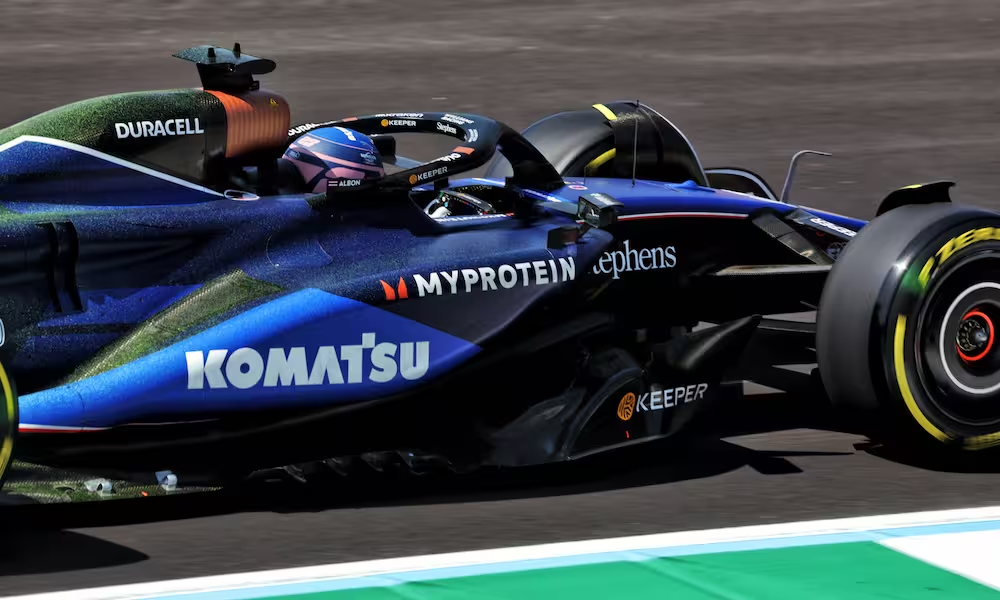Williams Formula 1 team principal James Vowles has explained how the team responded to one of its cars being disqualified from qualifying for the Dutch Grand Prix due to a rearward portion of its updated floor being too wide.
Alex Albon’s qualifying result was expunged after the FIA found his car’s floor body to ‘lie outside the regulatory volume’ mentioned in Article 3.5.1a of the technical regulations. That line in the regulations identifies a floor body reference volume, which consists of several measurements that are further defined in Point 5 of the rulebook appendix.
Williams didn’t dispute the accuracy of the FIA measurement system at Zandvoort and accepted its sanction, but pointed out that its own measurement system produced a different result.
Ahead of this weekend’s Italian GP at Monza, Vowles explained what Williams did next, both to ensure the car was legal for the race at Zandvoort, and to maintain compliance for subsequent F1 rounds. For the former, Williams removed the surplus floor body material from Albon’s car with 400-grit sandpaper to ensure it could race on Sunday. Albon went on to finish 14th after starting from the back row, but the British-Thai driver reckoned he could have finished in the points without his qualifying DQ.
‘[The] investigation still ongoing, which tells you how complex the problem is,’ said Vowles. ‘We have two sign-off methods at the factory. The first is in a jig, fundamentally, that is replicating the legal floor width. It fits within that. In other words, it is legal to the width of the jig. The second is on-car, in the factory, which was completed on Tuesday. Both of those checks revealed that the car was effectively legal.’
To double check the width ahead of the Italian GP at Monza, Williams conducted one further measurement on Thursday that showed the car as being ‘slightly over’ the FIA’s limit.
‘By slightly over, I mean decimals of a millimetre,’ added Vowles. ‘However, we did two things. You are always adjusting the floor to make sure it is aerodynamically in the correct region. I personally believe that one of those adjustments put the floor into a region where it was slightly more illegal than that. That pushed us over the limit.
‘With these situations, you’re always trying to get things to about zero. You don’t want to be under by two millimetres. It’s not important everywhere on the floor, but there are a few regions where it is…
Click Here to Read the Full Original Article at Racecar Engineering…

